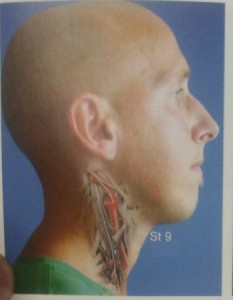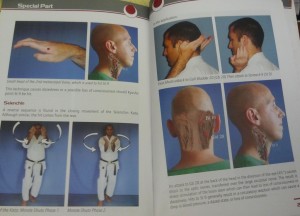A cool way to visualize the applications of kata.
by Ryan Gregory, March 26th, 2012While browsing the shelves at a local bookstore, I came across an interesting book entitled Kata Bunkai: The Secret Karate Techniques, by Helmut Kogel. Now, I am not big on the notion of “secret techniques”, but given the content of the book, I think this might be a translation artifact (from German) more than a claim to be taken at face value.
Although the book emphasizes concepts of the body as used in eastern martial arts and acupuncture, it is really about connecting these to a modern understanding of anatomy and physiology. This provides a very interesting juxtaposition, as I think it is important to see the body the way the early developers of martial arts saw it in order to understand their intents and biases, but also to put the techniques into a reliable anatomical context. There are lots of books that do something along these lines, pointing out what nerve/blood vessel/muscle/tendon/bone you’re targeting, but what I find particularly intriguing is the way this is presented by Kogel. What he has done is smoothly superimpose anatomical drawings (which look like they could be right out of Gray’s Anatomy) onto actual photos of opponents’ arms, legs, torsos, and heads. It’s a cool effect.


If I ever write a book on the science of martial arts, I think I will incorporate some imagery inspired by this approach.


 Brazilian Jiu-Jitsu
Brazilian Jiu-Jitsu
 Kodokan Judo
Kodokan Judo



hallo from Germany.
As a pupil of Prof. Dr. Helmut Kogel since decades, i would like to thank you for the positive comments.
If suited, i could arrange the contact to sensei Kogel.
With kind regards
Antonio Guida
Thank you for the comment!